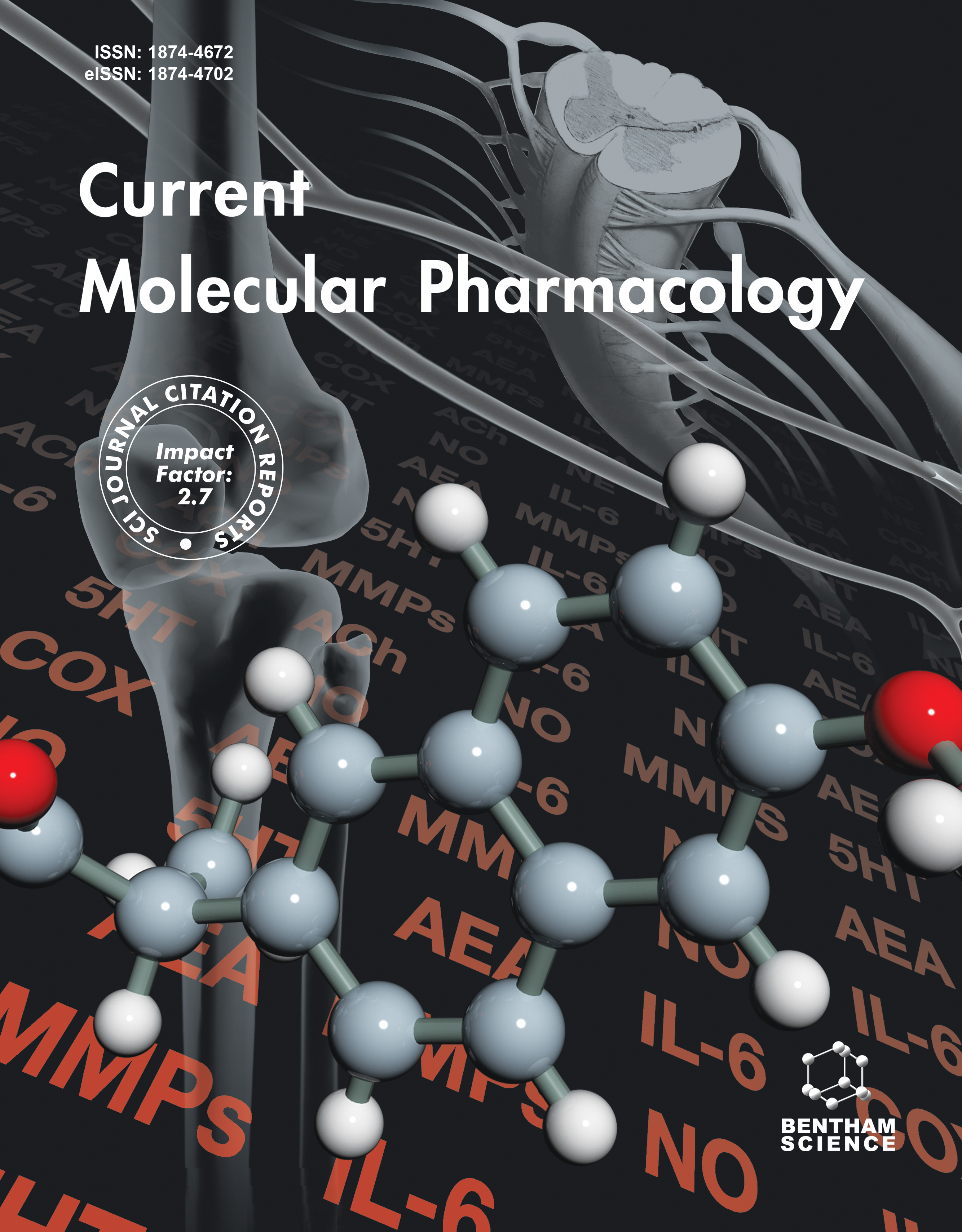- Home
- A-Z Publications
- Current Molecular Pharmacology
- Previous Issues
- Volume 1, Issue 2, 2008
Current Molecular Pharmacology - Volume 1, Issue 2, 2008
Volume 1, Issue 2, 2008
-
-
Reversal of ABC Drug Transporter-Mediated Multidrug Resistance in Cancer Cells: Evaluation of Current Strategies
More LessAuthors: Chung-Pu Wu, Anna M. Calcagno and Suresh V. AmbudkarOverexpression of ATP-binding cassette (ABC) drug transporters that actively efflux a variety of amphipathic compounds can cause multidrug resistance (MDR) in cancer cells, which is a major obstacle in the success of cancer chemotherapy. The development of synthetic small molecule compounds or the identification of natural products that block ABC transporter-mediated efflux has been the conventional approach use Read More
-
-
-
Modulation of Transmitter Release Via Presynaptic Ligand-Gated Ion Channels
More LessAuthors: K. W. Schicker, M. M. Dorostkar and S. BoehmNeurons communicate through the exocytotic release of transmitters from presynaptic axon terminals and the ensuing activation of postsynaptic receptors. Instantaneous responses of postsynaptic cells to released neurotransmitters are mediated by ligand-gated ion channels, whereas G protein-coupled receptors mediate rather delayed effects. Moreover, the actions of ionotropic receptors are transient (milliseconds to s Read More
-
-
-
Emerging Therapeutic Strategies for Hepatitis C Virus Infection
More LessAuthors: Ken Sato, Hitoshi Takagi, Takeshi Ichikawa, Satoru Kakizaki and Masatomo MoriThe universal prevalence of hepatitis C virus (HCV) infection, which causes chronic hepatitis, cirrhosis, liver failure, and hepatocellular carcinoma, has become a significant health problem worldwide. Interferon-based therapies, the current standard, IFN-based therapies have limited efficacy and undesirable adverse effects. In addition, neither vaccination against HCV nor specific antiviral reagents for HCV are yet available. Th Read More
-
-
-
Diamidine Activity Against Trypanosomes: The State of the Art
More LessAuthors: M. N.C. Soeiro, S.L. d. Castro, E.M de Souza, D. G.J. Batista, C. F. Silva and D. W. BoykinAromatic diamidines and related compounds are DNA minor groove binders that have been screened against a variety of pathogenic microorganisms such as bacteria, fungi and protozoa and show promising results. Parasitic infections are widespread in developing countries and are major contributors to human mortality and morbidity, causing considerable economic hardship. Trypanosomes are unicellular protoz Read More
-
-
-
DNA Polymerases and Oxidative Damage: Friends or Foes?
More LessAuthors: A. Amoroso, E. Crespan, U. Wimmer, U. Hubscher and G. MagaDNA is modified by many mutagens, including reactive oxygen species (ROS). When ROS react with DNA, various kinds of modified base and/or sugar moieties are produced. One of the most important oxidative DNA lesions is 7,8-dihydro-8-oxoguanine (8-oxo-G). Contrary to normal deoxyguanosine, 8-oxo-G favors a syn conformation, enabling it to form a Hoogsteen base pair with adenine which resembles a normal Read More
-
-
-
Host Genetic Factors and Treatment of Hepatitis C
More LessAuthors: Jacob Nattermann, Ludger Leifeld and Ulrich SpenglerInfection with the hepatitis C virus (HCV) is a major health problem worldwide due to the associated risk of developing liver cirrhosis and its sequelae. Approximately 200 million persons are chronically infected worldwide. Furthermore, about one third of HIV-infected individuals in Europe and the US are co-infected with HCV. Currently pegylated interferon-?? in combination with ribavirin represents the backbone of HCV-sp Read More
-
Most Read This Month
Article
content/journals/cmp
Journal
10
5
false
en


